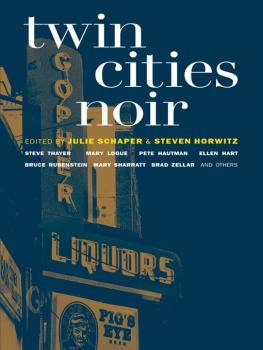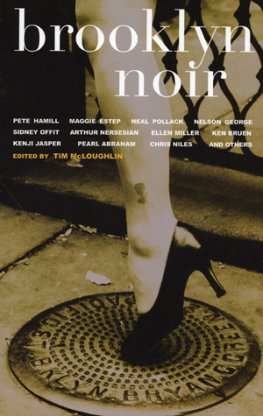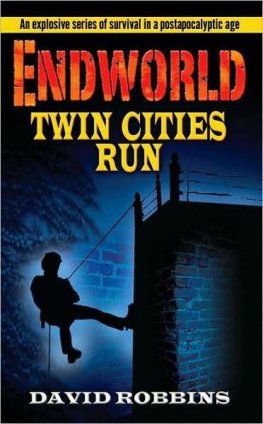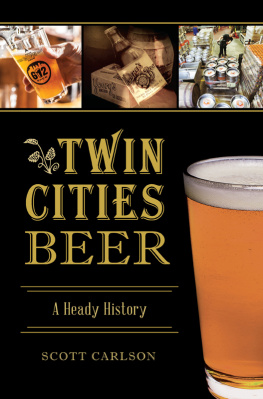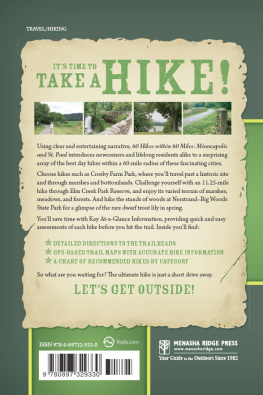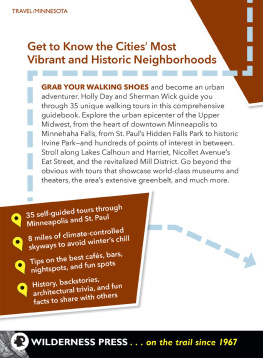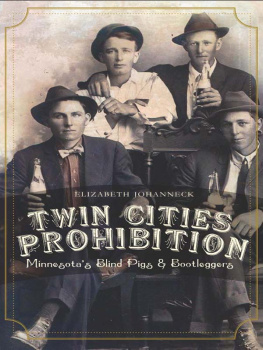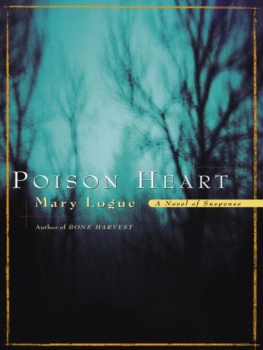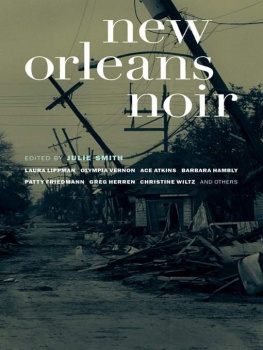

ALSO IN THE AKASHIC NOIR SERIES:
Brooklyn Noir, edited by Tim McLoughlin
D.C. Noir, edited by George Pelecanos
Manhattan Noir, edited by Lawrence Block
Baltimore Noir, edited by Laura Lippman
Dublin Noir, edited by Ken Bruen
Chicago Noir, edited by Neal Pollack
San Francisco Noir, edited by Peter Maravelis
Brooklyn Noir 2: The Classics, edited by Tim McLoughlin
FORTHCOMING:
Los Angeles Noir, edited by Denise Hamilton
London Noir, edited by Cathi Unsworth
Wall Street Noir, edited by Peter Spiegelman
Miami Noir, edited by Les Standiford
Havana Noir, edited by Achy Obejas
Bronx Noir, edited by S.J. Rozan
New Orleans Noir, edited by Julie Smith
This collection is comprised of works of fiction. All names, characters, places, and incidents are the product of the authors imaginations. Any resemblance to real events or persons, living or dead, is entirely coincidental.
Series concept by Tim McLoughlin and Johnny Temple
Twin Cities map by Sohrab Habibion
Published by Akashic Books
2006 Akashic Books
ePUB ISBN-13: 978-1-936-07053-4
ISBN-13: 978-1-888451-97-9
ISBN-10: 1-888451-97-1
Library of Congress Control Number: 2005934823
All rights reserved
Akashic Books
PO Box 1456
New York, NY 10009
Akashic7@aol.com
www.akashicbooks.com
For Sylviaolehasholiem
Acknowledgments
Thanks go out to all our bookselling friends, especially Pat Frovarp and Gary Shulze, Jeff Hatfield, Lyle Starkloff, Hans Weyandt, and Tom Bielenberg. Thanks also to Johnny Temple for giving us the opportunity, and to Johanna Ingalls for being Johanna Ingalls. And thanks to the Twin Cities writing community for their generosity and trust. If it werent for you, there would only be an introduction.
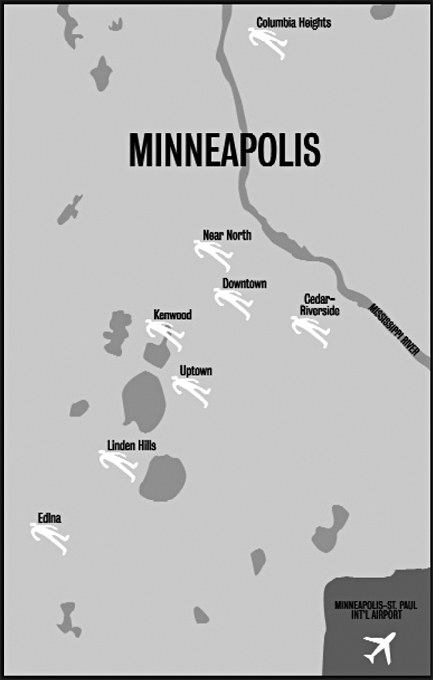
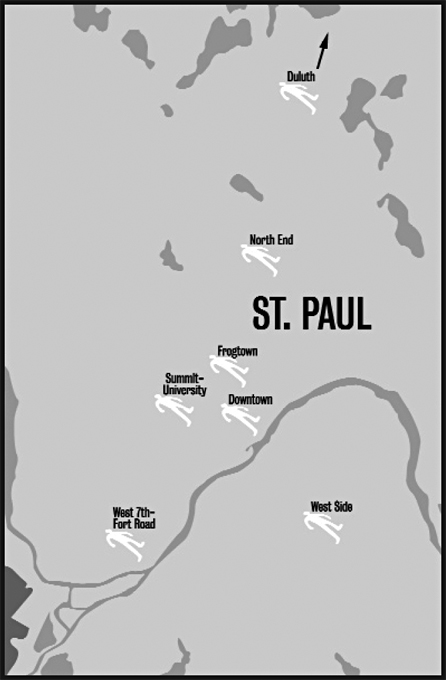
TABLE OF CONTENTS
TALES OF TWO CITIES
M urder and mayhem are probably not the first things that come to mind when most people think of the Twin Cities of Minneapolis and St. Paul.
What comes to mind may be snow emergencies and sub-zero temperatures; Eugene McCarthy, Paul Wellstone, and Jesse the body Ventura; Dylan, Prince, and The Replacements; the Guthrie, Theatre de la June Lune, and Heart of the Beast; The Walker, St. Paul Cathedral, and The Mall of America; Mary Tyler Moore, Tiny Tim, and F. Scott Fitzgerald; Lake Harriet, Lake Como, maybe even Lake Wobegone, which, depending upon who you talk to, may or may not be real.
But not crime.
Everyone here has an opinion about what makes the cities different from each other and what ties them together. A type of social shorthand has developed over the years. Minneapolis is hip and St. Paul is working class. St. Paul is the political capital, Minneapolis is the cultural capital. St. Paul was built by timber money and Minneapolis from grain. There is some truth in these generalizations but the people who live here know its not as simple as that and it never has been.
You dont have to look hard to find the darker underside.
St. Paul was originally called Pigs Eyes Landing and was named after Pigs Eye Parranttrapper, moonshiner, and proprietor of the most popular drinking establishment on the Mississippi. Traders, river rats, missionaries, soldiers, land speculators, fur trappers, and Indian agents congregated in his establishment and made their deals. When Minnesota became a territory in 1849, the town leaders, realizing that a place called Pigs Eye might not inspire civic confidence, change the name to St. Paul, after the largest church in the city. The following verse appeared in the paper shortly after:
Pigs Eye, converted thou shalt be like Saul.
Thy name henceforth shall be St. Paul.
St. Paul was a haven for cons on the lam in the 1920s and 30s. Bad guys across the country knew about the OConnor system. A criminal could come to St. Paul, check in with police chief John OConnor, and walk the streets openly, as long as he or she promised to stay clean. Ma Barker, Creepy Alvin Karpis, Baby Face Nelson, and Machine Gun Kelley spent time in the cities. The system fell apart in the early 30s, about the time that Dillinger shot his way out of his Summit Avenue apartment.
Across the river, Minneapolis has its own sordid story. By the turn of the twentieth century it was considered one of the most crooked cities in the nation. Mayor Albert Alonzo Ames, with the assistance of the chief of police, his brother Fred, ran a city so corrupt that according to Lincoln Steffans its deliberateness, invention, and avarice has never been equaled.
As recently as the mid-90s, Minneapolis was called Murderopolis due to a rash of killings that occurred over a long hot summer.
Every city has its share of crime, but what makes the Twin Cities unique may be that we have more than our share of good writers to chronicle it. They are homegrown and they know the territoryhow the cities look from the inside, out. Some have built reputations on crime fiction, others are playing with the genre for the first time, but all of them have a strong sense of this place and its people.
Bruce Rubenstein, Gary Bush, and Larry Millett illuminate the pastthe Irish cops, politics, radicals, and mob guys.
David Housewright, K.J. Erickson, and Mary Sharratt observe cultures colliding and the combustion that friction can cause. Pete Hautman and Judith Guest show us how amusingly dangerous life in the cities can be. Quinton Skinner, William Kent Krueger, and Ellen Hart illustrate what were all capable of when lives are on the line.
In these fifteen original stories we see representations of the past, the present, and perhaps even a glimpse of the future. Maybe as importantly, we see who we areMidwesterners, Minnesotans, and residents of the Twin Cities. We hope you enjoy reading these stories as much as we enjoyed putting this collection together.
Julie Schaper & Steve Horwitz
March 2006
St. Paul, Minnesota
B enito Hernandez did not know when Mai-Nu began leaving her window shade up. Probably when the late August heat had first arriveddog days in Minnesota. It was past 10:30 p.m. yet the temperature was eighty-six degrees Fahrenheit in Benitos bedroom and his windows, too, were wide open and his shades up. Just as they were in most of the houses in his neighborhood. That was one way to tell the rich from the poor in the Land of 10,000 Lakes. The ones who could afford central air, all their windows were closed.
The window faced Benitos room. Through it he could see most of Mai-Nus living room as well as a sliver of her bedroom. Mai-Nu was in her living room now, sitting on a rust-colored sofa, her bare feet resting on an imitation wood coffee table. She was stripped down to a white, sleeveless scoop-neck T and panties. What little fresh air that seeped through the window screen was pushed around by an electric fan that swung slowly in a half circle and droned monotonously. It didnt offer much relief. Benito could see strands of raven-black hair plastered to Mai-Nus forehead and a trickle of sweat running down between her breasts. Next to her on the sofa were a bowl of melting ice, a half-gallon carton of orange juice, and a liter of Phillips vodka. She was reading a book while she drank. Occasionally, she would mark passages in the book with a yellow highlighter.
Next page
